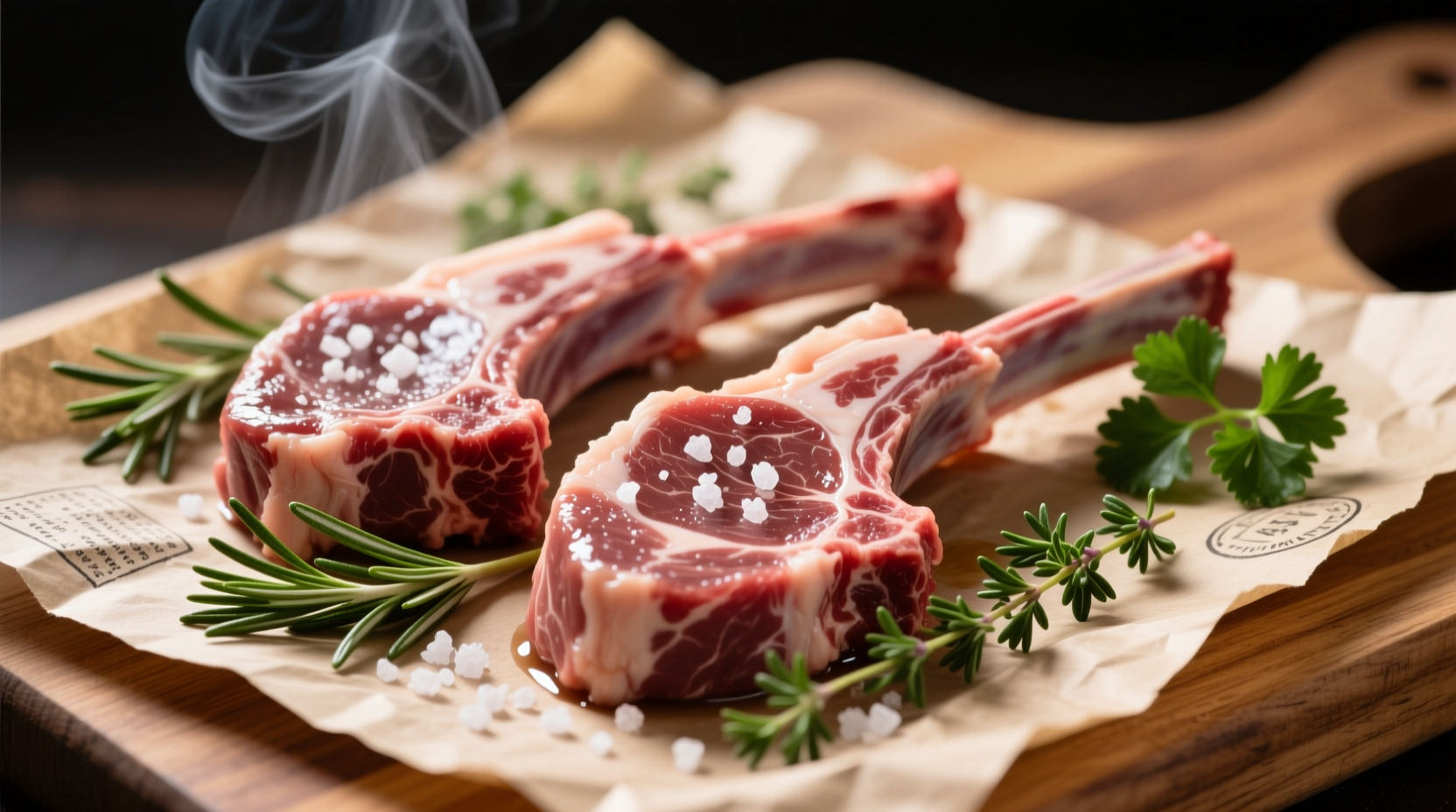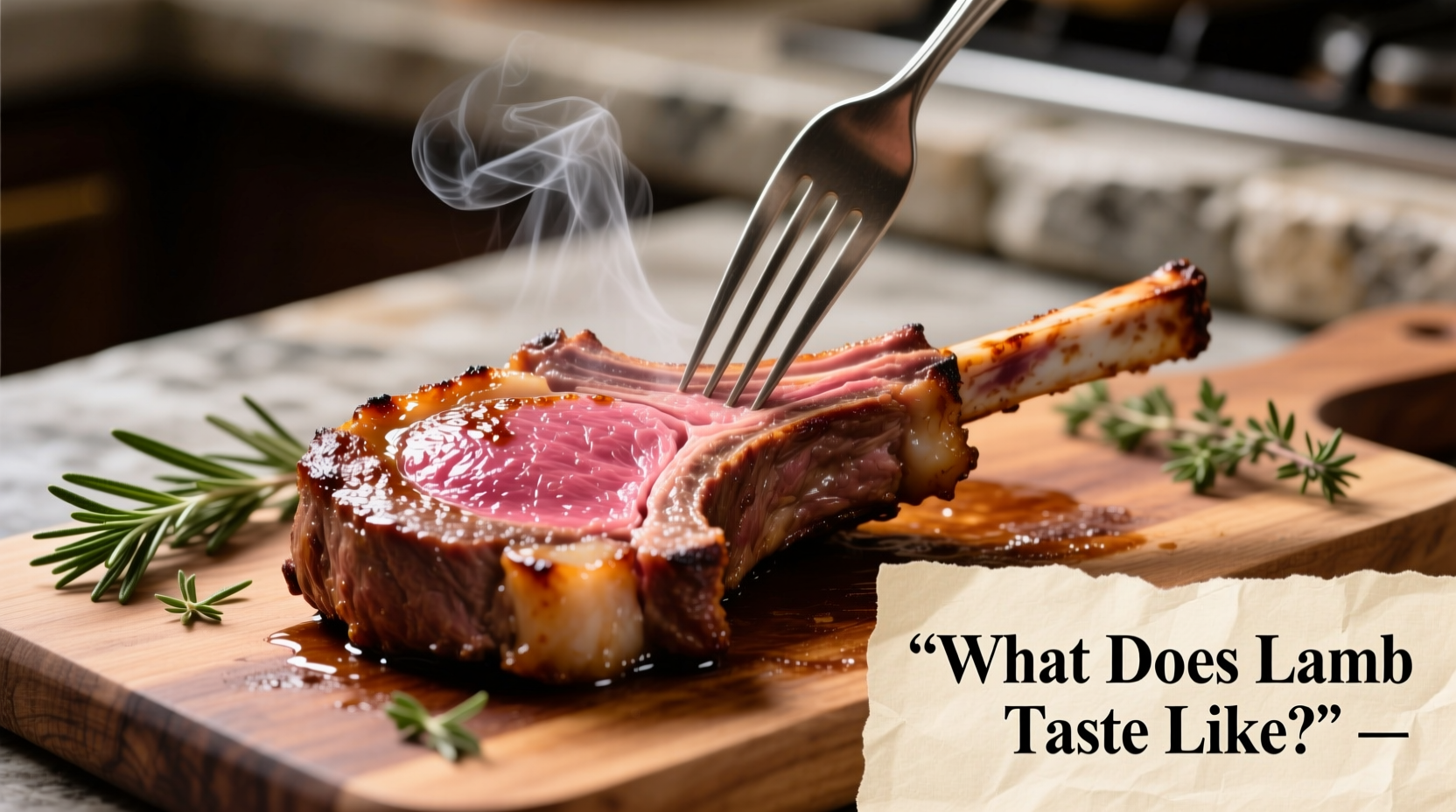Your Complete Guide to Understanding Lamb's Unique Flavor Profile
Ever wondered what makes lamb stand out in the world of meats? Whether you're considering trying it for the first time or looking to deepen your culinary knowledge, understanding lamb's distinctive taste can transform your cooking and dining experiences. This guide delivers exactly what you need to know about lamb's flavor characteristics, helping you make informed choices whether you're shopping, cooking, or ordering at a restaurant.
Breaking Down Lamb's Distinctive Taste Characteristics
Lamb's flavor stands apart from other common meats due to its unique chemical composition. The distinctive taste primarily comes from branched-chain fatty acids (BCFAs) found in higher concentrations in lamb than in beef or pork. These compounds create what many describe as a "gamey" quality, though this term often carries negative connotations that don't fully capture lamb's complexity.
When properly raised and prepared, lamb offers a rich umami experience with earthy undertones and subtle grassy notes reflecting the animal's natural diet. The fat content plays a crucial role in lamb's flavor profile—high-quality lamb fat has a clean, almost nutty sweetness that melts during cooking, basting the meat internally and creating exceptional tenderness.
| Meat Type | Flavor Intensity | Primary Flavor Notes | Fat Characteristics |
|---|---|---|---|
| Lamb | High | Earthy, grassy, slightly gamey, umami-rich | Crisp, clean fat with nutty sweetness |
| Beef | Medium-High | Robust, meaty, iron-like | Rich, buttery when marbled |
| Pork | Medium | Neutral, slightly sweet | Mild, neutral flavor |
| Chicken | Low | Mild, neutral | Subtle, neutral |
What Factors Influence Lamb's Taste?
Lamb's flavor isn't uniform—it varies significantly based on several key factors that affect what does lamb taste like in your particular experience:
Breed Differences
Different sheep breeds produce meat with distinctive flavor profiles. For example, New Zealand lamb typically has a milder flavor due to the animals' grass-fed diet and younger slaughter age, while Scottish Blackface lamb develops a more pronounced gamey character from grazing on heather-covered hillsides. According to the American Lamb Board, breed accounts for approximately 30% of flavor variation in lamb products available to consumers.
Diet and Terroir
The saying "you are what you eat" applies directly to lamb. Grass-fed lamb develops more complex flavor compounds from the diverse plants in its diet, creating subtle herbal notes. Grain-finished lamb tends to have milder flavor with richer marbling. The USDA Agricultural Research Service confirms that diet composition directly affects the fatty acid profile, which determines much of lamb's distinctive taste.
Age of the Animal
This is perhaps the most significant factor in what does lamb taste like. True lamb comes from animals under 12 months old and offers the mildest, most tender meat. Hogget (1-2 years) develops more pronounced flavor, while mutton (over 2 years) has the strongest, most gamey taste. Most American consumers prefer younger lamb for its more approachable flavor profile.
How Cooking Methods Transform Lamb's Flavor
The way you prepare lamb dramatically affects its final taste. Understanding these transformations helps you control what does lamb taste like in your finished dish:
- Grilling and Broiling: High-heat methods create delicious Maillard reaction browning that enhances lamb's natural sweetness while reducing perceived gaminess
- Slow Roasting: Allows fat to render gradually, basting the meat internally and creating exceptionally tender, flavorful results
- Braising: Breaks down tougher cuts while mellowing the flavor profile, making it ideal for stronger-tasting mutton
- Herb and Spice Pairings: Rosemary, mint, garlic, and cumin complement lamb's natural flavors without overwhelming them

Common Misconceptions About Lamb's Taste
Many people avoid lamb based on misconceptions about what does lamb taste like. Let's clarify some common misunderstandings:
"Lamb always tastes too gamey" - This depends entirely on the factors we've discussed. Well-raised, properly handled lamb from younger animals has a mild, approachable flavor that many first-time tasters describe as "surprisingly pleasant. "
"Lamb tastes like mutton" - These are distinctly different products. Mutton comes from older sheep and has a much stronger flavor that some find challenging. Most lamb sold in supermarkets is from animals under 12 months old.
"All lamb tastes the same" - Regional variations create dramatically different flavor experiences. A study published in the Journal of Food Science found measurable flavor differences between lamb raised in different geographic regions due to variations in local vegetation.
Tips for First-Time Lamb Eaters
If you're curious about what does lamb taste like but hesitant to try it, these practical tips will help you have the best possible experience:
- Start with mild preparations like grilled lamb chops rather than strongly flavored dishes like curries
- Choose cuts from younger animals labeled "spring lamb" for the most approachable flavor
- Look for bright red meat with creamy white fat—this indicates freshness and proper handling
- Try it at a reputable restaurant before attempting to cook it yourself
- Pair with complementary flavors like mint, rosemary, or garlic that enhance rather than mask the natural taste
Remember that cultural context affects flavor perception too. In many Mediterranean and Middle Eastern cuisines where lamb is a staple, palates develop an appreciation for its distinctive qualities from childhood. What might seem "strong" to a first-time American eater often becomes a beloved flavor profile with exposure.
Understanding Regional Flavor Variations
Lamb's taste varies significantly by region due to differences in breed, diet, and traditional preparation methods. New Zealand lamb typically offers the mildest flavor profile due to grass-fed animals slaughtered at younger ages. Australian lamb follows a similar profile but can show slightly more variation. American lamb often has a richer flavor due to varied feeding practices, while British and Irish lamb frequently displays more pronounced earthy notes reflecting the animals' pasture diets.
These regional differences explain why what does lamb taste like can vary dramatically depending on where it's sourced. The Food and Agriculture Organization of the United Nations documents how terroir affects meat flavor profiles globally, noting that local vegetation directly influences the fatty acid composition that determines taste.
How Lamb Compares to Other Meats
Understanding lamb's place in the meat flavor spectrum helps set accurate expectations. Compared to beef, lamb offers a more complex flavor profile with earthier notes and less metallic iron taste. Against pork, lamb stands out with its distinctive richness and absence of sweetness. When contrasted with chicken, lamb's robust umami character creates a dramatically different eating experience.
Many first-time lamb eaters find its flavor intensity falls between beef and venison—more pronounced than standard beef cuts but less intense than wild game. This middle ground makes lamb an excellent gateway to exploring more adventurous proteins while remaining approachable for those accustomed to conventional meats.
Practical Takeaways for Your Next Lamb Experience
Now that you understand what does lamb taste like and the factors that influence its flavor, you can make informed choices that match your preferences:
- For mild flavor: Choose New Zealand or Australian lamb, preferably labeled "spring lamb"
- For richer flavor: Opt for American or British lamb from grass-fed sources
- To minimize gaminess: Select cuts with moderate marbling and avoid overcooking
- To enhance natural flavors: Use simple preparations with complementary herbs rather than heavy sauces
- For best results: Purchase from reputable sources that properly age and handle the meat
Whether you're shopping at your local supermarket or ordering at a restaurant, this knowledge empowers you to select and prepare lamb in ways that highlight its best qualities. The distinctive flavor that makes lamb special becomes an asset rather than a barrier when you understand how to work with it.
Frequently Asked Questions About Lamb's Taste
Why does lamb taste different from beef?
Lamb contains higher levels of branched-chain fatty acids (BCFAs) that create its distinctive earthy, slightly gamey flavor profile. Beef has different fat composition with more marbling that creates a richer, more metallic taste. The animals' diets and digestive systems also contribute to these flavor differences.
Does all lamb taste gamey?
No, not all lamb tastes strongly gamey. Younger lamb (under 12 months) from grass-fed animals typically has a milder, more approachable flavor. Factors like breed, diet, age, and proper handling significantly affect how pronounced the gamey notes appear. Many first-time tasters are surprised by how mild quality lamb can be.
How can I reduce lamb's gamey flavor?
You can mellow lamb's flavor by choosing younger animals (labeled "spring lamb"), proper refrigeration, and using complementary marinades with acidic components like lemon or vinegar. Cooking methods like grilling that create flavorful browning can also balance the taste. Avoid overcooking, as this concentrates flavors and can make lamb taste stronger.
Why does some lamb taste like grass?
Lamb that tastes distinctly grassy comes from animals that grazed on diverse pasture diets. The compounds from grasses and wild plants transfer to the meat's fat, creating subtle herbal notes. This is generally considered a positive attribute in high-quality lamb, reflecting natural feeding practices. The USDA confirms that diet directly affects the fatty acid composition responsible for these flavor notes.
Does lamb taste better than beef?
Taste preference is subjective and depends on personal palate. Lamb offers a more complex, earthy flavor profile compared to beef's richer, more metallic taste. Many people appreciate lamb's distinctive character once they become familiar with it. Culinary professionals often value lamb for its unique flavor that stands out in dishes where beef might blend in.











 浙公网安备
33010002000092号
浙公网安备
33010002000092号 浙B2-20120091-4
浙B2-20120091-4